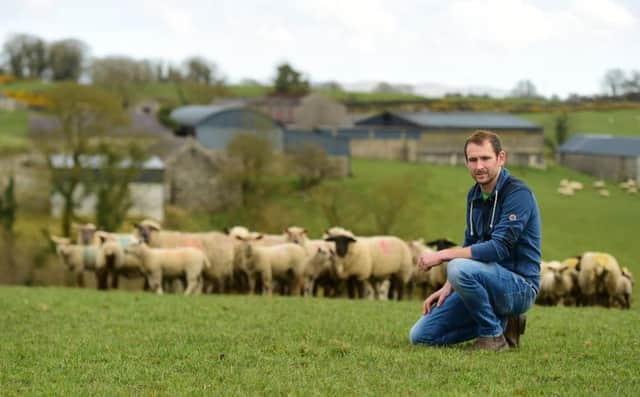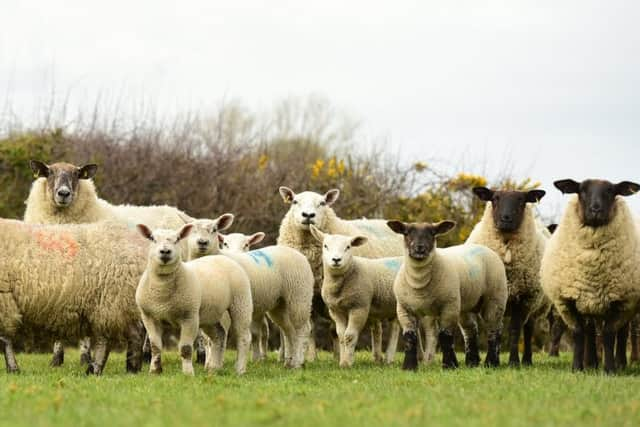Charollais - a favourite to maximise profits


As breeders it is necessary that we are aware of what these farmers are looking for and also importantly that they know what we as a breed have to offer.
David Cromie is one such farmer - a guy with many talents, one wonders how he gets everything fitted in. A keen footballer, David plays for his local club and is well known for his speed and skill on the pitch. A joiner by trade David is kept busy with his day job. There is also big demand for his custom made sheep feeders which are very popular. Not content to rest on his laurels David keeps 140 Suffolk Cheviot ewes and 27 pure bred Charollais Ewes.
Advertisement
Advertisement
David farms along with his father Alan on their family farm at Millhaven, Rathfriland, County Down. The farm was originally a Flax Mill generating work for many people in the area. Today David and his dad who both have full time jobs run around 140 Suffolk Cheviot ewes and 90 beef heifers which they buy in to finish.


Sheep have always featured on the farm with David’s grandfather Willie a keen shepherd and willing to try new ideas purchasing a Charollais ram way back in the early days. Shortly after a few pure bred Charollais ewes were bought and the XEF prefix was formed. Only a child at this stage David has always had a keen interest in the sheep and as he grew up and took on more work on the farm he built up the sheep numbers with Charollais always a firm favourite. Sheep are lambed in February and housed two weeks before lambing. Ewes and lambs usually turned out within two to three days of lambing, even this year with the wet weather he was able to get them out. He is lucky that his ground is dry and with plenty of shelter. Lambs are mainly grass fed with some creep introduced at around six weeks. He starts weighing them from 11/12 weeks and most are ready around this time unless they have had a set back. Lambs are sold direct to ABP where they killout Es and Us so he gets a bonus.
Four years ago David decided to purchase a few Charollais pure bred ewes re-establishing their Charollais Flock, in 2017 venturing across to Worcester Premier to purchase a Charollais Ram.
Involved with the DAERA Sheep Business Group David is keen to improve his flock and get the best returns. Benchmarking within the group gives an indicator of how you are performing compared to others and also gives you ideas on how you can improve.
I asked David his plans for improving Flock performance:
Advertisement
Advertisement
“Improving is all down to paying attention to the finer details.
“Maximising the performance of your Ewe: Pre tupping and pre lambing ewes are dosed. A mineral lick is available to ensure they are getting any mineral supplements if required. The healthier your ewe is the less likelihood of lambing difficulties and increases the ability to produce more milk. The more milk a ewe produces the better your lambs will do
“The Quality of your Rams: Never buy inferior rams, rams should always be of the highest standard, using a lesser ram may result in slow growing lambs with poor conformation .
Grassland Management: If you want to finish lambs off grass in as short a time as possible then the grass needs to be premium. Good grass management is as essential pre tupping as it is after lambing
Advertisement
Advertisement
“Management is Paramount: Some people have this romantic idea that sheep look after themselves that you just need to check them over the hedge to make sure they are all there. Those of us who work with sheep know that this is far from true, sheep need to be constantly checked so that any problems can be picked up right away.”
So for David how does Charollais fit into all this?
David feels that using a Charollais Ram ticks all the right boxes. The Charollais breed have a lot to offer the sheep industry. He is well pleased with his Charollais X lambs. One of their biggest pluses for him is their live weight gain. His Charollais lambs are always away first. The other lambs could be standing head and shoulders above the Charollais but the Charollais will weigh the heaviest.
The easy lambing ability of the Charollais resulting in less stress for the ewe and ensures that both ewe and lambs keep going forward.
What does David see as the way forward with Charollais?
“The breed needs to continue to focus on the standard within the breed. It’s important that the breed keeps their standards high and maintain the muscle and conformation of the Charollais along with the length of loin which is so important to the value of the Charollais lamb and why they are much sought after by the butcher.”
The Premier Sale of Charollais Sheep will be held on Monday, 30th July in Dungannon Market, Show 10.30am Sale 1.00pm. Details can be viewed online at www.charollaissheep.com.